#mesopotamian winged lions
Text

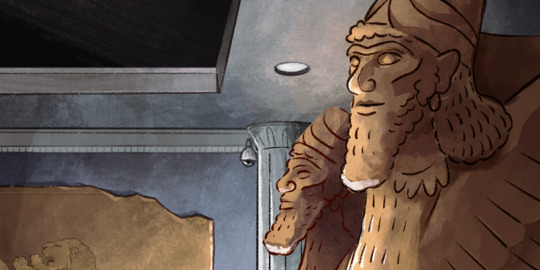
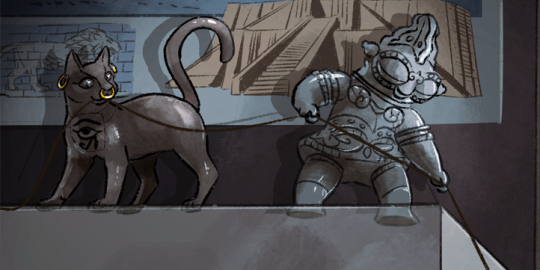


the elevator pitch for this is "a Toy Story/Night at the Museum-style educational series that teaches kids about art history"
they probably wouldn't let me have the tits-out minoan snake woman but that's ok
#illustration#my art#from left to right:#bastet#dogū#minoan snake goddess#colima dog#jizo statue#mesopotamian winged lions#i made the sketch for this back in 2020 and was too afraid to finish it#i dont think it ended up how i wanted it but im glad it ended up somewhere
2K notes
·
View notes
Text
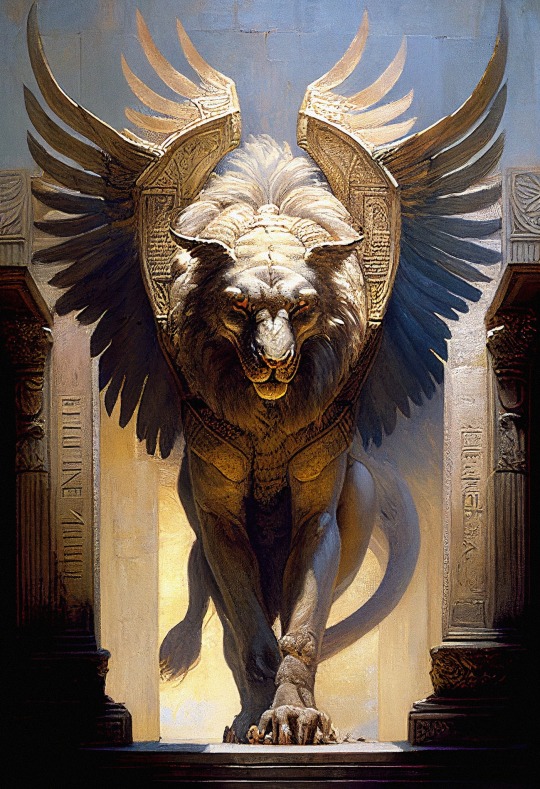
No beginning or end: it was a concept that best described the existence of Zurvan Akarana, an ancient Persian deity. He had no beginning, no end, or a specific gender (although he’s often referred to as a male) and could have been best symbolized as being “a circle of eternal life.”
Zurvan
Talon Abraxas
The earliest mentions of Zurvān appear in tablets dated to about the 13th and 12th centuries bce, found at the site of the ancient Mesopotamian city of Nuzi. Known also as the god of growth, maturity, and decay, Zurvān appeared under two aspects: Limitless Time and Time of Long Dominion. The latter emerges from Infinite Time, lasts for 12,000 years, and returns to it. Zurvān was originally associated with three other deities: Vayu (wind), Thvarshtar (space), and Ātar (fire).
Zurvān was the chief Persian deity before the advent of Zoroastrianism and was associated with the axis mundi, or the centre of the world. The most common image of Zurvān depicts a winged, lion-headed deity encircled by a serpent, representing the motion of the Sun.
37 notes
·
View notes
Note
Hello to Nox . Just wanted to ask your view on two asteroids Giza(5249) & Sphinx(896), i know those two different but some what related "Great Sphinx Of Giza". Thank you so much.
sphinx, the omniscient riddler (asteroid 896)
so asteroid giza (5249) is related to the city itself, and asteroid sphinx (896) is related to the creature.
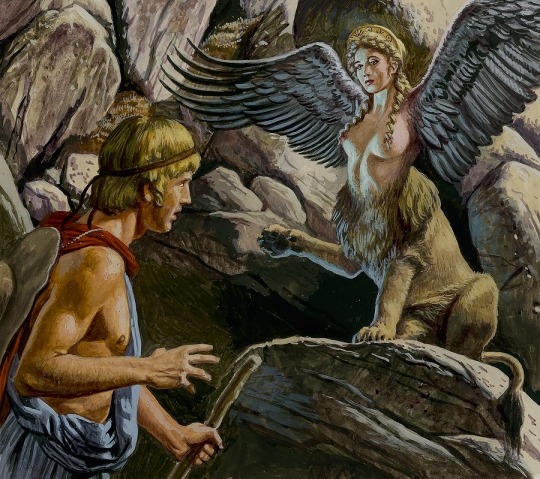
A sphinx is both the legends of Egyptian, Mesopotamian, and Greek myths. The sphinx is a mythical creature with the body of a lion and the head of a human. Sphinxes originated in the Near East - it was likely Pharaoh Khafre who had the Sphinx of Giza erected. Art after that point in time often depicted sphinxes trampling enemies of kings. In Greek lore, the sphinxes were female, but in Eastern lore, the sphinx could be either gender. There is one Greek sphinx that stands out among the rest... The winged sphinx of Boeotian Thebes terrorized people with a riddle taught to her by the Muses. "What is it that has one voice and yet becomes four-footed, two-footed, and three-footed?" When the riddle was answered correctly, the person could marry the widowed queen, Jocasta. Every time someone answered incorrectly, the sphinx would eat them. Oedipus was the first to give the correct answer: "a man"; he crawls as an infant, walks when grown, and needs the support of a staff when of old aged. The sphinx then either killed herself by hurling herself off a cliff, or Oedipus dispatched her. Oedipus then, of course, unknowingly married his own mother Jocasta as the prophecy stated in his myth. IN MY OPINION Sphinx in your chart can represent a) where you might be seen as menacing, b) your reputation for being cruel or threatening, c) your wisdom, d) your appreciation for riddles, and/or e) your ability to appear omniscient.

i encourage you to look into the aspects of sphinx along with the sign, degree, and house placement. for the more advanced astrologers, take a look at the persona chart of sphinx AND/OR add the other characters involved to see how they support or impede sphinx!
OTHER RELATED ASTEROIDS: jokaste (899)
like what you read? leave a tip and state what post it is for! please use my "suggest a post topic" button if you want to see a specific post or mythical asteroid next!
click here for the masterlist
want a personal reading? click here to check out my reading options and prices!
#astrology#astro community#astro placements#astro chart#asteroid astrology#asteroid#natal chart#persona chart#astrology tumblr#greek mythology#astrology blog#astrology chart#natal astrology#astrology readings#astro notes#astro observations#astroblr#sphinx#asteroid896
37 notes
·
View notes
Text


ASTARTE is the Canaanite/Phoenician goddess of love, sex, war, and hunting who developed from the Mesopotamian deity Inanna/Ishtar. She is usually associated with the storm god Baal but seems to have been much more popular. She traveled to Egypt through trade where she was adopted as a war deity and consort of Set.
She was associated with war in the Levant prior to her arrival in Egypt, but stories concerning her usually emphasize her skill in hunting and aspects of her relationship with Baal and the god El. She is often depicted with horses and chariots after her arrival in Egypt and as a beautiful naked woman, sometimes with wings or horns, as she was in Canaanite/Phoenician regions which also associated her with the dove, bee, and lion.
Read More Here
300 notes
·
View notes
Note
Hello! I was curious if you have any suggestions on how to refer to a human-nonhuman hybrid being in Sumerian.
Hello! Mesopotamian myth contains several creatures which were part-human, like the Lamassu, with human heads, bird wings, and bull or lion bodies. But I don't know of any term for this category in general that the Sumerians would have used. They didn't even have a precise term for the broad category of "animal" or "nonhuman creature", so any such hybrid would be based on what kind of animal is being hybridized, as in a bird-human, sheep-human, etc.
They did, however, talk about hybrids of different breeds or kinds of animal. It's known that the Mesopotamians created hybrids between domesticated and wild donkeys, though they used the same term for them (anshe 𒀲) that they did for regular donkeys. They also used the term adara 𒀉𒁰 to refer to specific hybrid breeds of goats or sheep, particularly ones with long, ibex-like horns. If anyone has other terms or sources on this topic, do reblog and let me know!
18 notes
·
View notes
Text

Edward Henry Corbould - (1815-1905) - "Astarte"
He was a British painter and draughtsman on wood, etcher and sculptor; pupil of his father Henry Corbould; appointed drawing master to Queen Victoria's children, 1851-72; married to Fanny Jemima, daughter of the engraver Charles Heath.
Astarte is the Canaanite/Phoenician goddess of love, sex, war and hunting who developed from the Mesopotamian deity Inanna/Ishtar. She is often depicted with horses and chariots after her arrival in Egypt and as a beautiful naked woman, sometimes with wings or horns, as she was in the Canaanite/Phoenician regions, which also associated her with the dove, the bee and the lion.
#Edward Henry Corbould#artistsupport#Astarte#Ishtar#Inanna#british artist#british painter#mytology#ancient egypt#phoenician#biography#paintings
49 notes
·
View notes
Photo


The Imdugud [Sumerian/Mesopotamian mythology]
Hybrid creatures have been a staple in mythology from around the world for as long as there have been myths and stories. In ancient Sumerian mythology, there were tales about the Imdugud, a species of mythical creatures that resembled a cross between a lion and a large bird. These beings had the body and wings of a gigantic bird with the head of a lion, but I want to point out that their Akkadian counterpart (which was called Anzu) was said to have a saw-like beak rather than a lion’s maw.
In either case, an Imdugud was a huge creature. When it flapped its wings, it created sandstorms and whirlwinds.
In one myth, a mighty Imdugud steals the mystical tablet of destiny from the deity Enki (who was called Enlil in Akkad). The hero Ninurta sets out on a quest to retrieve this item and ends up slaying the monster.
In Sumerian, the word ‘Imdugud’ is used to spell the word ‘mist’ so these beings might have been a personification of wind and mist.
Source:
Black, J. and Green, A., 1992, Gods, Demons and Symbols of Ancient Mesopotamia: an illustrated dictionary, University of Texas Press, 192 pp.
(image source 1: Reos-Empire on Deviantart, it depicts an OC character based on the Imdugud)
(image 2: drawing of a stone relief from Girsu (which is now Tello) from the Early Dynastic Period. Image taken from Black and Green, 1992)
#Sumerian mythology#Mesopotamian mythology#Akkadian mythology#monsters#mythical creatures#creatures#mythology
73 notes
·
View notes
Photo

Cylinder seal with goddesses Ninishkun, the subject of three hymns attributed to Enheduanna, and Ishtar, Mesopotamia, Akkadian, Akkadian period (ca. 2334–2154 BCE),
Cuneiform inscription: “To the deity Niniškun, Ilaknuid, [seal]-cutter, presented (this), Limestone”
This cylinder seal was dedicated to a little-known goddess, Ninishkun, who is shown interceding on the owner's behalf with the great goddess Ishtar. Ishtar places her right foot upon a roaring lion, which she restrains with a leash. The scimitar in her left hand and the weapons sprouting from her winged shoulders indicate her war-like nature.
Poet Enheduanna (ca. 2300 BCE), the earliest-named author in world literature. Bringing together a spectacular collection of her texts alongside other works made circa 3400–2000 BCE.
Enheduanna received her name, which means “high priestess, ornament of heaven” in Sumerian, upon her appointment to the temple of the moon god in Ur, a city in southern Mesopotamia, in present-day Iraq.
The daughter of the Akkadian king Sargon, Enheduanna left an indelible mark on the world of literature by composing extraordinary works in Sumerian. Her poetry reflected her devotion to the goddess of sexual love and warfare — Inanna in Sumerian, Ishtar in Akkadian.
Whereas much of ancient Mesopotamian literature is unattributed, Enheduanna introduced herself by name and included autobiographical details in several poems. Her passionate voice had a lasting impact in Mesopotamia, as her writings continued to be copied in scribal schools for centuries after she died.
The Oriental Institute of the University of Chicago, acquired 1947; A27903.
Text courtesy: Hyperallergic
#art#design#tablet#enheduanna#priestess#sumeria#mesopotamia#iraq#royal#poetry#king sargon#history#style#inanna#ishstar#akkadian#cylinder#ninishkun
76 notes
·
View notes
Text
P6 Idea - 22 Dragon Veins
First let's talk about dragon veins. They are formed from the collective subconscious of extinct creatures on the earth, and they have always supported the balance of this world. After the protagonist completes certain tasks and the dragon veins enter into a contract, the dragon veins will reside in the protagonist's body and allow the protagonist to give birth to a "cosmic egg" that symbolizes motherhood. As the protagonist takes care of the cosmic egg, it will turn into a persona.
The personas hatched from the cosmic egg are a mixture of their own mythological images and Mesozoic reptilians. The arrangement of the 22 Arcana is as follows:
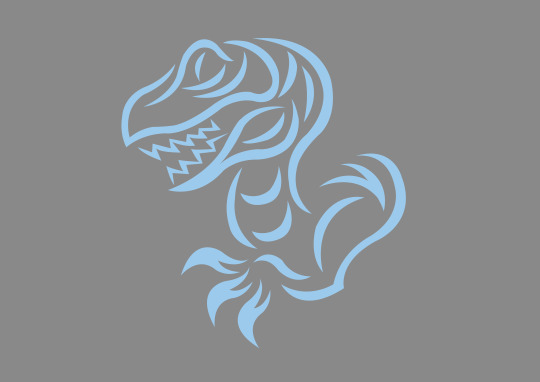
The Fool - Yam, the sea god in Ugaritic mythology - A dromaeosaur covered in ocean-style armor

The Magician - Aitvaras, the fire spirit in Lithuanian folklore - An oviraptor dressed as a wizard with hands on fire

The Priestess - Kuraokami, the water goddess in Japanese mythology - An elegant plesiosaur wrapped in Shinto relics

The Empress - Meretseger, the winged snake goddess in Egyptian mythology - Archaeopteryx in ancient Egyptian style

The Emperor - Yatonokami, the horned snake god in Japanese mythology - A stegosaur decorated with cold weapons from the Jomon period

The Hierophant - Itzamna, the lizard god in Mayan mythology - A sauropod made of Mayan architectural stones

The Lovers - Melusine, the winged human-snake fairy from French folklore - A petite pterosaur with a draconic fairy sculpture on its tail

The Chariot - Tarasque, the monster suppressed by a saint in French legend - An ankylosaur assembled from a round tank and turret

Justice - Mushussu, the hybrids appearing on decorations in ancient Mesopotamia - Shringasaurus decorated with snake, ram, lion, eagle and scorpion armors
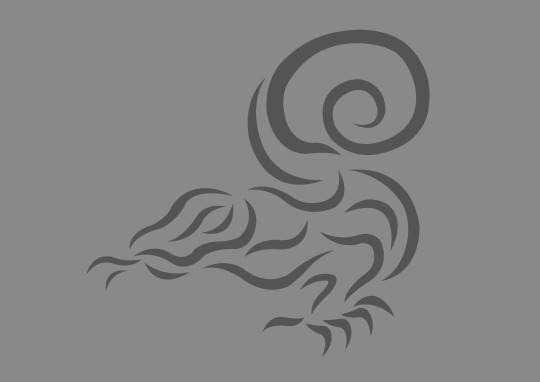
The Hermit - Fafnir, the dwarf who transformed into dragon in Norse mythology - An megalania wearing dragon-shaped armor

Fortune - Illuyanka, the sea serpent in Hittite mythology - Mosasaurus with cyberpunk style

Strength - Vrtra, the powerful monster in Hindu mythology - A tyrannosaur that blends into the truck and keeps smoking
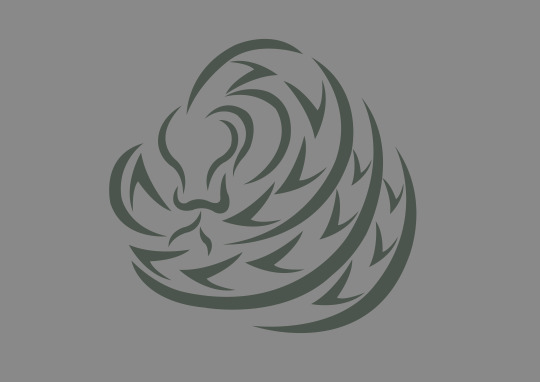
The Hanged Man - Python, the big snake killed by Apollo in Greek mythology - Titanoboa with steampunk elements

Death - Crom Cruach, the heretic god in Celtic mythology - Triceratops with steam train and gothic decoration

Temperance - Gargouille, the monstrous decoration on a French abbey - A spinosaur with Gaigan elements

The Devil - Apophis, the evil snake god in Egyptian mythology - A giant cobra made of dark energy

The Tower - Fernyiges, the cunning black dragon in Hungarian folklore - A wise stygimoloch wearing a black cloak
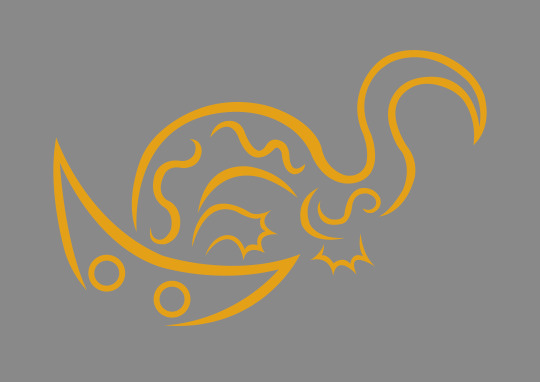
The Star - Yurlungur, the rainbow serpent in Australian Aboriginal mythology - Prehistoric salamander in Aboriginal totem style

The Moon - Bakunawa, the sea dragon that swallowed the moon in Philippine mythology - Ichthyosaur composed of moon-shaped luminous wooden boards

The Sun - Quetzalcoatl, the greatest god in Aztec mythology -
A giant pterosaur in the style of a fighter jet and Rodan
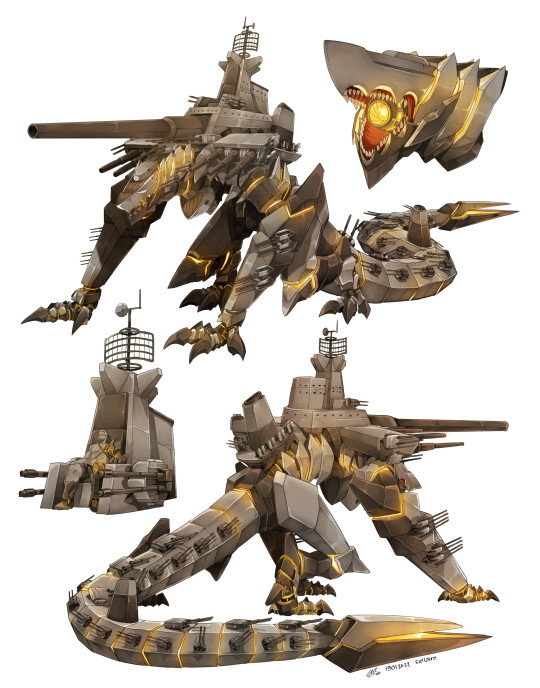
Judgement - Kur, the dragon that symbolizes the underworld in Mesopotamian mythology - Countless dragon veins and sharp metals piled up to form a Daikajiu like Godzilla
As for "The World", I'm keeping it secret for the time being in order not to prevent the plot from leaking out.
3 notes
·
View notes
Text

So long as we're retreading familiar overlaps of other trees...
GRIFFIN classic Greek monster with the body of a lion and head and wings of an eagle and taloned front legs. Oddly took a few games to actually get particularly griffon-y.
KAIM aka KHAIM both mistakenly misromanized from what should be CAIM, the name of a demon in the Ars Goetia who takes his name from the biblical Cain.
SANDBEAST actually called DESERT BEAST in Japanese. Once again seems to bring us back to the old Monster Collection/MonColle TCG, although the creature in question bears no resemblance to the WA game model. But it's the only apparent shared namesake I could find.
AXEBEAK I get what family this overlapped with, maybe BASILISK or COCKATRICE? It's a D&D monster.
CHIMERA FLAM just part of the elemental CHIMERA quartet in WA3. No lore.
ANZU a monster from Mesopotamian myth depicted variously as either a giant eagle or an eagle lion hybrid.
MANTICORE a monster of Persian origins with the body of a lion, face of a man with 3 rows of sharp teeth, and tail of a scorpion.
BEMZUU I have no idea what this is. It appears to be gibberish words.
DAREDEVIL I assume just meaning the general term for a stunt performer but I put a picture of the marvel comics character just for funsies.


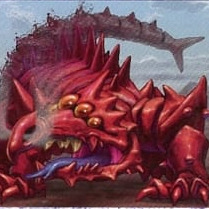


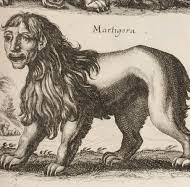

3 notes
·
View notes
Text
Lamassu
Initially depicted as a goddess in Sumerian times, when it was called Lamma, it was later depicted from Assyrian times as a hybrid of a human, bird, and either a bull or lion—specifically having a human head, the body of a bull or a lion, and bird wings, under the name Lamassu.





The lamassu is a celestial being from ancient Mesopotamian religion. The lamassu and shedu were household protective spirits of the common Assyrian people, becoming associated later as royal protectors, and were placed as sentinels at entrances.
I decided to portray the hybrid type, not the goddess, for the ai art. Also, didn't go for the typical Lamassu with the human head, but gave it a twist. I also used lapis lazuli as their main color, which was a valued and regarded stone back then.

#lamassu#shedu#mesopotamian#sumerian#assyrian#assyro babylonian#mythological#mythology#art#ai art#lapis lazuli#creature#hybrid
9 notes
·
View notes
Note
If you could only choose 2, what would be your favorite monsters/beasts of all time from any mythology or legend
jesus christ this is SO hard to answer, i've been marinating on it for a couple days.
I am currently balls deep in an Oni fixation. I love oni, I think they're so incredibly fascinating to the point where I made travel plans to visit Beppu during my Japan trip later this year to see a lot of the kitschy oni lore it's famous for first hand. (picture me explaining to my partner why Oni Tourism is included in all our itineraries)
My next pick is probably the lamassu from Sumerian/Babylonian/Akkadian myth. One of the really common threads with Mesopotamian monsters is that they're usually composite creatures made up of a number of fearsome animals. (Kind of like how most norse monsters are Huge and Ancient, Mesopotamians were scared of Animals with Many Skills). Lamassu (also sometimes used interchangeably with Shedu) are a composite beast that's a mix between a bull and a lion, with eagle's wings and a human face. I think they're cool as shit. Personally, I kind of like depictions of them where they appear more feline than equine, and less human but their intelligence, ferocity, and cool form (AND their symbolic presence as gatekeepers) is just really primed to catch my imagination.
#thank you for asking#i really had to think about this god#i also really really love jotunn but they're not really monsters/beasts so I opted for an alternative#but genderless/genderfull ancients who resist the domestication of the world#so fucking hot
5 notes
·
View notes
Text


A Circle of Eternal Life
No beginning or end: it was a concept that best described the existence of Zurvan Akarana, an ancient Persian deity. He had no beginning, no end, or a specific gender (although he’s often referred to as a male) and could have been best symbolized as being “a circle of eternal life.”
'Zurvān'
Talon Abraxas
The earliest mentions of Zurvān appear in tablets dated to about the 13th and 12th centuries bce, found at the site of the ancient Mesopotamian city of Nuzi. Known also as the god of growth, maturity, and decay, Zurvān appeared under two aspects: Limitless Time and Time of Long Dominion. The latter emerges from Infinite Time, lasts for 12,000 years, and returns to it. Zurvān was originally associated with three other deities: Vayu (wind), Thvarshtar (space), and Ātar (fire).
Zurvān was the chief Persian deity before the advent of Zoroastrianism and was associated with the axis mundi, or the centre of the world. The most common image of Zurvān depicts a winged, lion-headed deity encircled by a serpent, representing the motion of the Sun.
53 notes
·
View notes
Text
THE BARNEY RELIEF

The Barney relief is a tall terracotta relief dating to the second millennium B.C. The find was found in Iraq and then moved to London.
The relief depicts a nude woman wearing a headdress with four horns, wings and holding a ring and rod. The woman is placed on two scaled lions and accompanied by two owls. Originally painted in red ochre and later lost its color.
The interpretation of this find is very controversial but one thing is certain: it is a divine being of high rank with governing powers precisely because of its depiction with ring and rod.
But actually what is it about?
There could be several answers: at first it was thought to be Lilitu because of the clawed paws, a symbol of a demonic being. This idea, however, was discarded since Lilitu cannot be classified as a high-ranking goddess in the Mesopotamian context. Another association is Ereshkigal for her title of "queen of the night," but even that does not entirely convince.
But then, who does this table represent?
The answer is Ishtar. The clues that make us think of her are many:
☀️ Lions have always been Ishtar's companions. One of Ishtar/Inanna's appellations is "lioness of battle," and many scholars tend to associate lion deities precisely with the goddess Ishtar.
☀️ The goddess Ishtar has already been depicted holding a ring and rod precisely to indicate her position of supremacy over all other deities. In fact, she was the central figure of the entire pantheon and for many peoples who lived in Mesopotamia and beyond. This feature of Ishtar continues to be used even in the Neo-Assyrian period in multiple representations of her.
☀️ The headdress also seems to indicate that we are dealing with a goddess of high rank. This further supports the thesis that we are dealing with the goddess Ishtar.
☀️ The appellation "Queen of the Night" was used to refer to Ishtar-Shaushka. Shaushka is a goddess worshipped by the Urritic and Hittite people and the equivalent of the goddess Ishtar.
☀️ The details of the low relief appear to depict the myth of Inanna's descent into Kur, a Sumerian word used for the underworld and thus equivalent to Hades.
11 notes
·
View notes
Text
Watching a youtube video about dragons and I feel weirdly validated...
I’ve had a few people come at me saying, even trying to argue, that some of my furry dragons are griffins because they have beaks... despite the complete lack of lion-features other than the features most mammals have (fur and paws)
Heck the Mesopotamian dragons were described as part bird part lion... (albeight opposite of the traditional griffin, and they don’t have beaks..)
The most common descriptions of dragons around the world seem to be feathered flying snake, and that’s very much what I draw them as.
A dragon is whatever you want it to be.
I could call my creatures griffins sure, but it’s more due to the fact that I have several of them that are clearly related but doesn’t have the beak that I chose not to.
I have for instance Ace here... who’s clearly not a griffin due to a complete lack of lion or bird features other than having wings...

Then there’s Ryuusagi who has a beak, and also horns, but the rest of her features are the same as Ace. A long slender body, covered in fur, a furry mane going down their spine, mammalian paws and rabbit ears for some reason.

I mix and match these features however I want them to.
Sometimes they got a lizardlike face. Sometimes they have manes, sometimes not, sometimes they have bird-talons, sometimes they have mammal-feet, sometimes they have horns that vary from little nubs to full on antlers.
If they were real animals I imagine them somewhat like a rabbit...
Rabbits have often been mistaken for rodents due to their small size and ever-growing teeth, but they are not... They’re not even closely related. Their teeth is a result of convergent evolution, not because they are closely related to mice.
There’s also the shrew, which is sometimes lumped in with mice despite yet again they’re not rodents. They don’t even have the rodent-teeth. That body-shape just so happened to be ideal for their survival.
And that is why Ryuusagi isn’t a griffin.
Thanks for coming to my random rant.
#dragon#furrydragon#Usagi rants#kinda#its a happy rant because a random youtuber agrees with me that dragons can be just about anything you want them to
3 notes
·
View notes
Text
Anzû is a Mesopotamian deity who can breathe fire and water. The legend of the land that today is modern Iraq says that the winged lion-eagle stole the Tablets of Destiny.

1 note
·
View note